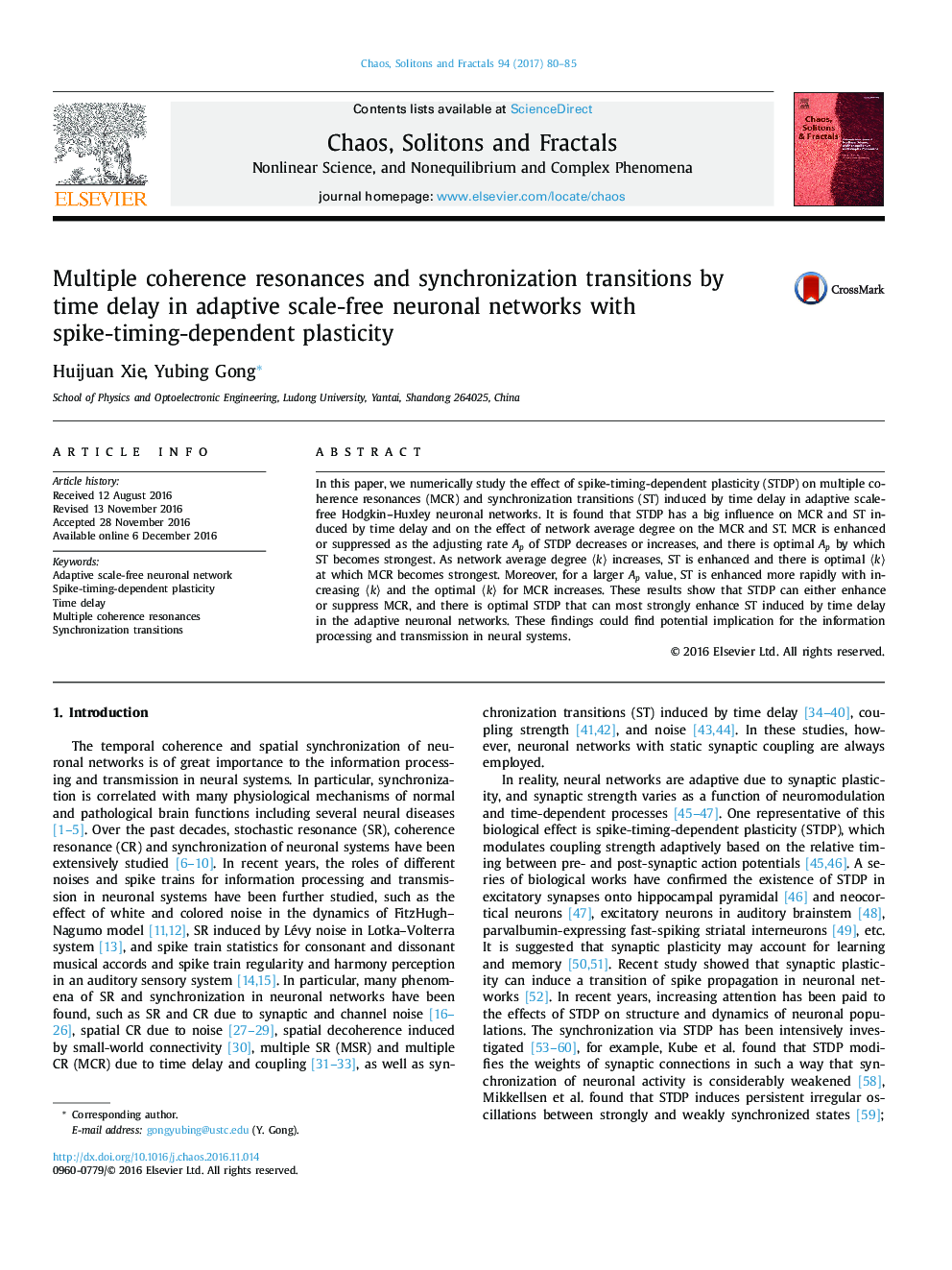| Article ID | Journal | Published Year | Pages | File Type |
|---|---|---|---|---|
| 5499790 | Chaos, Solitons & Fractals | 2017 | 6 Pages |
Abstract
In this paper, we numerically study the effect of spike-timing-dependent plasticity (STDP) on multiple coherence resonances (MCR) and synchronization transitions (ST) induced by time delay in adaptive scale-free Hodgkin-Huxley neuronal networks. It is found that STDP has a big influence on MCR and ST induced by time delay and on the effect of network average degree on the MCR and ST. MCR is enhanced or suppressed as the adjusting rate Ap of STDP decreases or increases, and there is optimal Ap by which ST becomes strongest. As network average degree ãkã increases, ST is enhanced and there is optimal ãkã at which MCR becomes strongest. Moreover, for a larger Ap value, ST is enhanced more rapidly with increasing ãkã and the optimal ãkã for MCR increases. These results show that STDP can either enhance or suppress MCR, and there is optimal STDP that can most strongly enhance ST induced by time delay in the adaptive neuronal networks. These findings could find potential implication for the information processing and transmission in neural systems.
Related Topics
Physical Sciences and Engineering
Physics and Astronomy
Statistical and Nonlinear Physics
Authors
Xie Huijuan, Gong Yubing,
